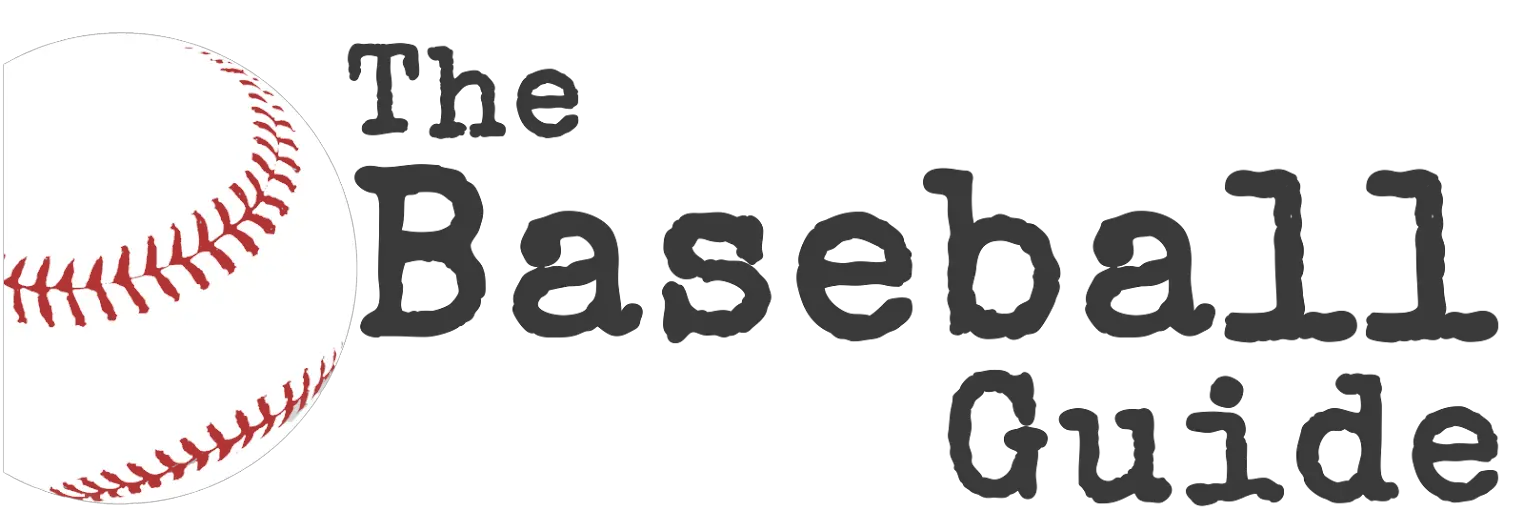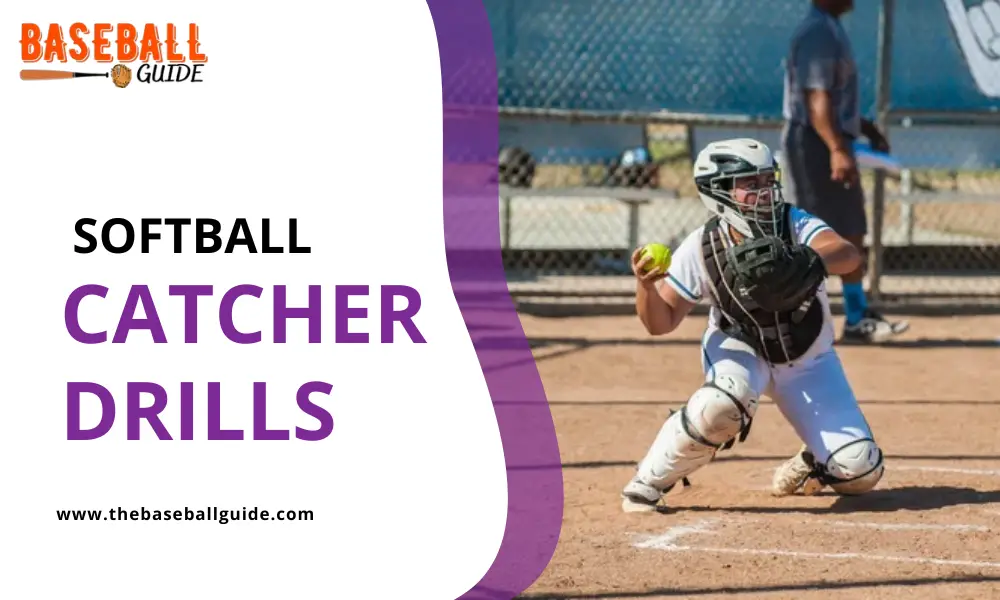Softball is an exciting game that is similar to baseball. There are few differences in how they are played, but the basic essence and goal are identical.
The significant difference is that a regulation softball is significantly larger in size than a regulation baseball. Because of this bigger size, catchers in softball usually have a hard time controlling the ball on the field.
Most coaches organize drills to improve a player’s performance. They organize drills in pitching, batting, and catching. This will help the overall performance of the players.
Given below are some of the best softball catcher drills for beginners and advanced players that you can follow to improve your catching performance in your next softball game.
Drills for Softball Catchers
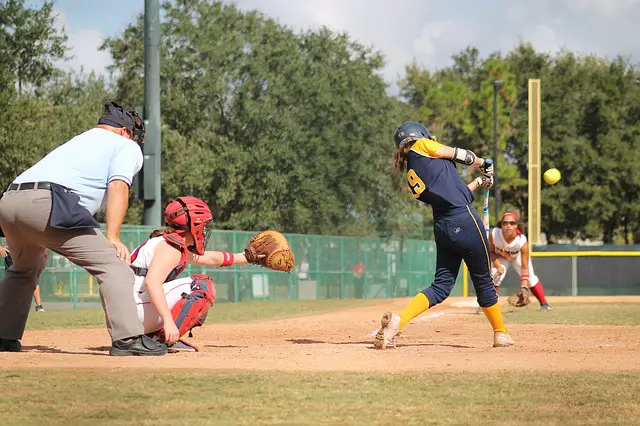
There are plenty of catching drills a softball player can follow to improve their catching techniques. Apart from the already available ones, it is not uncommon for a coach to come up with their own catcher workouts, depending on the player’s level of understanding and interest. Wearing a complete catcher’s gear during the drill can also help your performance.
In this case, we have researched and compiled a thorough list of some of the most effective softball catcher exercises a player can follow to improve their catching fundamentals, or a coach can use to train other players.
Blocking Drill
One of the first steps to becoming a good catcher is to know how to block the ground balls. Blocking the ball is especially important to stop runners from advancing. But keep in mind this is a blocking drill, so it is not yet time for catching.
- The first thing to do is to get into an athletic catching position, where the catcher has to keep
- Feet square to the pitcher
- Flexion in the ankles, knees, and hips
- Glove in a relaxed position
- Now, when the ball arrives, the first thing to do to block that ball is to drop the knees to the ground replacing your feet.
- After dropping on your knees, create an angle with your back that will direct the ball down to the ground.
- Position the glove between your legs to protect the ball from getting underneath you and keep your throwing hand behind the gloves for protecting your fingers.
- During this drill, keep your shoulders round to keep the ball in front of you, and also keep your chin down so that the ball stays in vision.
- This drill can be done with or without the ball, and therefore is also an excellent indoor catcher drill that you can practice at home.
- Keep doing this drill at least 10 times a set to get used to it and so that you can react as quickly as possible when the ball arrives.
This is one of the most basic and important drills for a catcher. A coach can use a whistle, clap, or voice command to get the player into a blocking position and back to the athletic catching stance. You can do it slowly first and then speed up the process as you get used to the drill.
Receiving Drill
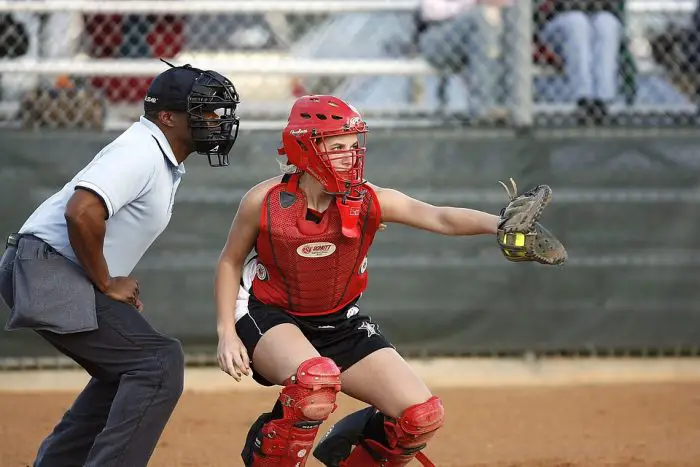
One of the main jobs of a catcher is to be able to receive solid pitches. A good dependable catcher builds confidence, chemistry, and trust among the teammates when pitching. Therefore, this drill focuses on improving the receiving skills of a catcher.
- Just like in the blocking drill, the first step of this drill to is to get into the athletic catching stance mentioned before.
- When the ball is thrown toward the middle of the plate, the catcher will receive the ball with the glove in a horizontal position.
- However, if the ball is thrown at any other area of the plate, then framing is necessary.
- So, if the ball is pitched inside or outside the plate, then the catcher will receive the ball with a vertical glove position.
- If the ball is pitched high, then the catcher will have to frame the ball from the top of the strike zone.
- If the ball is pitched low, then the catcher will have to frame the ball from below the strike zone.
You will need help from another person for this drill. You can ask the coach, a fellow player, a friend, or a family member, to help you out. Ask them to pitch the ball to various areas of the strike zone, while the catcher receives the ball using the before mentioned techniques.
You can also make variations to this drill by practicing barehanded with a tennis ball or by increasing and reducing the throwing distance.
Practice this drill at least 10 times in a row for each of the areas in a strike zone. For instance, count 10 receives for high pitch and then switch to 10 receives for low pitch.
Similarly, go side to side and center. By the end of the drill, the catcher should gain a good idea about which pitch is within the strike zone and which pitch is in the ball zone.
Throwing Drill
Throwing is an important skill, and all catchers must learn how to throw correctly. A good throw from the catcher can stop a base from getting stolen. Therefore, this fast-pitch softball catching drill focuses on improving the throwing skills of a catcher.
- Just like in the previous two drills, the first step in this drill too is to get into the same athletic catching stance.
- Now, when the catcher receives the pitch, there should take place proper footwork and transfer
- In this drill, the catcher should repeat the footwork and body alignment multiple times to perfect the throwing skill.
- The catcher must step forward in an athletic position keeping the legs, hips, and shoulders aligned while transferring the ball into the throwing hand.
- You can practice this forward motion in the athletic position by moving in this way from base to base.
- The catcher must move towards the base and then raise the throwing hand to the ears while keeping the shoulders up in a position ready to throw.
- Finish the drill by practicing the throw, but keep in mind to get the hips through while throwing, which is the key to a perfect throw.
- Keep practicing the drill multiple times, say around a set of 10-15 throws per training, and this should significantly improve your throwing skills.
This softball catcher exercise is very important as throwing is one of the key aspects of softball. While throwing is an important skill for every player in the game, it tends to be special for catchers because of their athletic stance. A good catcher must know how to transition through the athletic stance and throw the ball perfectly.
Softball Catchers Stance
The softball catcher’s stance is a crucial aspect of their performance behind the plate. Catchers must position themselves in a way that allows them to effectively catch and block pitches, as well as throw out baserunners. Here are some key elements of the softball catcher’s stance:
Firstly, the catcher should position their feet shoulder-width apart, with the toes pointed slightly outward. This provides a stable base for the catcher to move from side to side or forward and back, depending on the pitch location.
Next, the catcher should position their body low to the ground, with their knees bent and their weight shifted slightly forward. This allows the catcher to quickly move up and down to catch low pitches or block balls in the dirt.
The catcher’s hands should be positioned in front of their body, with the glove hand slightly lower than the throwing hand. The catcher should also keep their fingers closed and their thumbs pointed toward each other to create a target for the pitcher.
In addition to these physical elements, catchers should also focus on their mental approach. They should maintain a calm and focused mindset, focusing on their breathing and visualizing themselves successfully catching each pitch.
By mastering the proper stance and maintaining a strong mental approach, softball catchers can improve their performance behind the plate and help their team succeed on the field.
Benefits of Catcher Drills
The position of a catcher is one of the essential places while playing defense since the catcher is involved in almost every play. For beginners, practicing these drills can be very uncomfortable. It can still be tough for intermediate players, and sometimes even advanced players can experience soreness.
The primary benefit catchers can receive from these drills is to get used to the stance they are supposed to play in. Getting the body used to the uncomfortable sitting for a long time can be extremely tough, and so, these drills can prove very helpful in developing the catcher’s fundamentals.
Another benefit of going through these catcher workout programs is that the catcher develops a good instinct toward the game. This can be a key factor in the game as the catcher most of the time is the only person who can stop a base from getting stolen.
Common Catcher Mistakes and How to Fix Them
As with any position, catchers can make mistakes that can cost their team runs or even games. Here are some common catcher mistakes and how to fix them:
Not Blocking Pitches Correctly
A common mistake catchers make is not blocking pitches correctly, which can lead to passed balls and wild pitches.
To fix this, catchers should focus on getting their bodies in front of the ball and keeping their chest and face protected.
They should also practice using their body to control the ball and keep it from getting past them. Blocking drills that simulate game-like situations can help catchers develop these skills.
Poor Footwork
Catchers need to have quick and agile footwork to move behind the plate and make plays. Poor footwork can lead to missed catches, missed throws, and even injuries.
To fix this, catchers should practice footwork drills that improve their speed and agility. They should also work on their balance and coordination to maintain their positioning while making plays.
Not Framing Pitches Properly
Catchers can also make the mistake of not framing pitches properly, which can cause strikes to be called balls or vice versa.
To fix this, catchers should focus on presenting the pitch to the umpire in a way that makes it look like a strike.
They should work on their hand positioning, body language, and timing to make the pitch look as good as possible. Framing drills that simulate game situations can help catchers develop these skills.
Poor Throwing Mechanics
Catchers need to have strong and accurate throwing arms to make plays on base runners. Poor throwing mechanics can lead to errors, stolen bases, and other defensive breakdowns.
To fix this, catchers should work on their throwing mechanics, including their footwork, arm slot, and release point. They should also practice throwing to different bases and in different game situations to improve their decision-making.
By identifying and fixing common catcher mistakes, catchers can improve their performance on the field and help their team win games. Catchers should practice these skills regularly to develop muscle memory and build confidence in their abilities.
Final Words
Catcher training is essential as it builds confidence, chemistry, and trust between the players. With a reliable catcher, a team can perform to its full potential. All the softball catcher workouts mentioned above are beneficial and can actively shape any beginner into a good catcher.
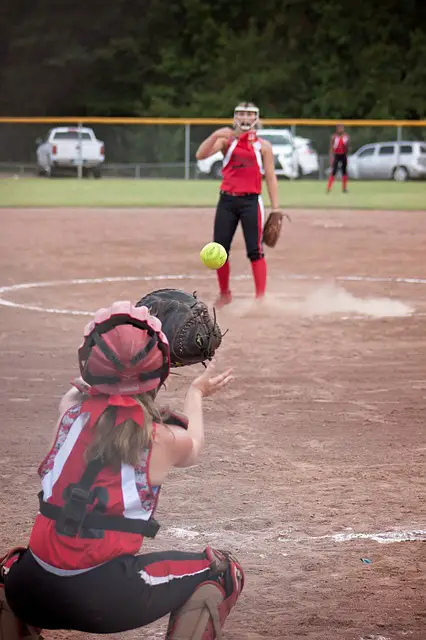
These can also be used as youth softball catcher drills to train the young players who are just introduced to the game. Make sure to follow all the tips mentioned above and also not strain the catcher too much.
